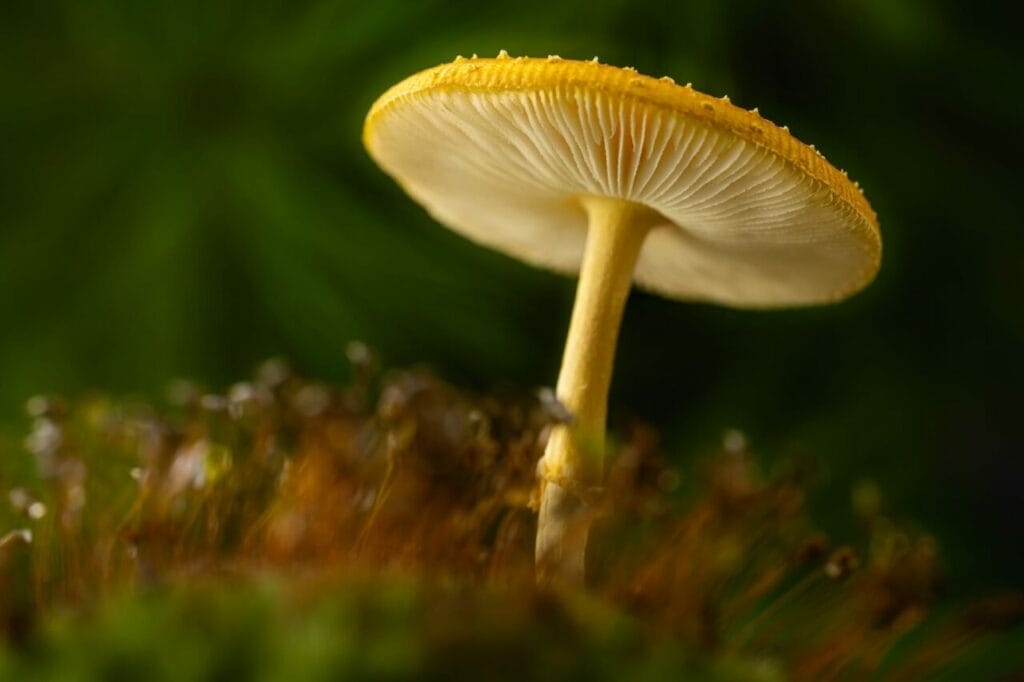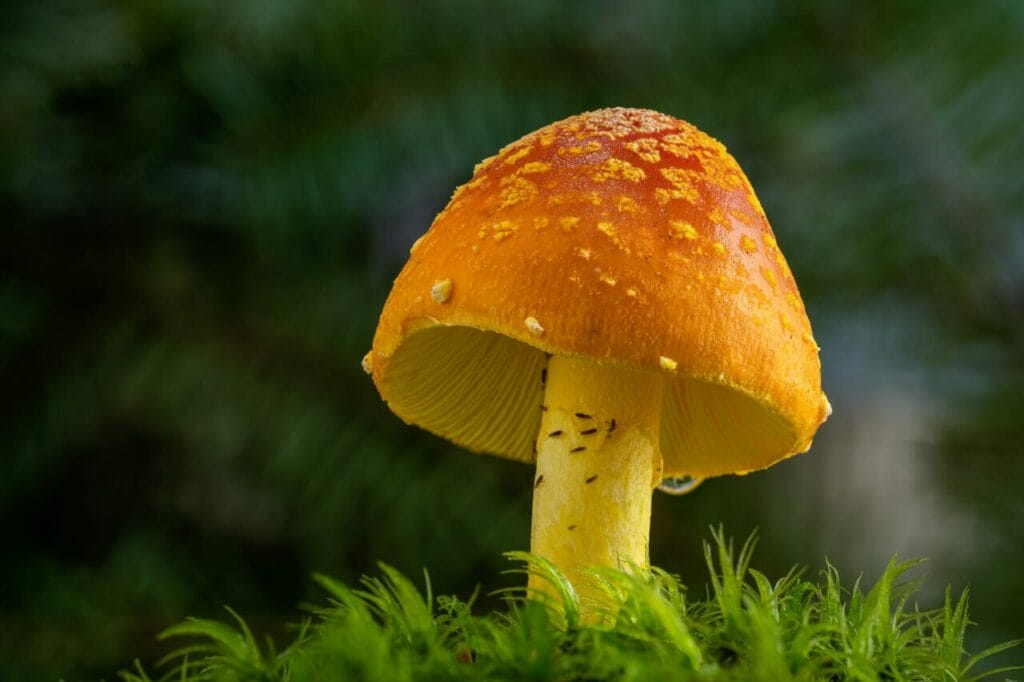Guided Psychedelic Therapy Canada
Psychedelic-assisted therapy encompasses the utilization of consciousness-altering substances such as psilocybin, ketamine, LSD, or MDMA within a clinical environment as an adjunct to conventional psychotherapy practices.
Health Canada informs healthcare practitioners that they must assess requests for psychedelic therapy on an individual basis. This approach must only apply when other conventional treatments have proven ineffective, are deemed unsuitable for the patient, or are not readily accessible within the Canadian healthcare system.
Physicians and psychologists express optimism about Health Canada’s decision to permit doctors to request psychedelic drugs. They find that this decision can help struggling patients.
This article delves into guided psychedelic therapy Canada to assist individuals seeking to incorporate psychedelic-assisted psychotherapy into their treatment regimen. It provides insights into the regulations and essential information for those considering this therapeutic approach.
Table of Contents
- Guided Psychedelic Therapy Canada
- What is Psychedelic-Assisted Therapy?
- The Development of Psychedelic Therapy
- Disorders That Psychedelics Treat
- How Does Psychedelic Therapy Work?
- Therapeutic Agents in Psychedelic Therapy
- How to Find Assisted Psychotherapy with Psychedelics?
- Psilocybin for Treatment at Zoomies Canada
- Frequently Asked Questions
- Are substances in psychedelic-assisted therapy addictive?
- What is integration in psychedelic therapy?
- What if I experience a negative encounter during my psychedelic-assisted therapy?
- Does psychedelic-assisted therapy bear a resemblance to the practice of microdosing?
- What is the best psychedelic for improving mental health issues?

What is Psychedelic-Assisted Therapy?
Psychedelic therapy, also known as PAP, is a psychiatric approach that incorporates the consumption of psychedelic substances within a psychotherapeutic context. This form of therapy integrates the use of psychedelics with traditional talk therapy.
Various consciousness-altering psychedelic drugs are presently either employed or under investigation for therapeutic purposes. Some originate from plants, such as psilocybin (a naturally occurring psychedelic compound in magic mushrooms), DMT, peyote, ayahuasca, and ibogaine.
The application of psychedelic therapy is a relatively recent development in Western clinical settings. Preliminary findings are showing that psychedelic medications are effective in treating certain conditions,
The Development of Psychedelic Therapy
Psychedelics have a historical lineage spanning thousands of years, deeply rooted in various global cultures and religions. Archaeological findings highlight the presence of peyote in Mesoamerica, psychoactive mushrooms and saliva in Mexico, ayahuasca in the Amazon, and cannabis in the ancient societies of Central Asia and India. The traditional utilization of psychedelics, while enduring in certain cultures, has always been confined to specific communities and has never experienced widespread adoption.
| 50s and 60s | Scientists worldwide initiated investigations into the therapeutic potential of psychedelic substances. |
| 70s | Much of the research on psychedelics came to a standstill due to the shifting global perspectives on drug utilization. |
| 2000 | Researchers from Johns Hopkins secured regulatory approval to recommence studies involving psychedelics in individuals without prior exposure to such substances. |
| 2006 | The study titled “Psilocybin can induce mystical-type experiences with significant and lasting personal and spiritual meaning” is the groundbreaking research that ignited a resurgence in global psychedelic studies. |
| 2021 | The period marked the nascent stage of publicly traded companies specializing in psychedelic medicines. This expansion broadened the range of treatments under investigation and increased the number of scientists engaging in psychedelic clinical trials. |
| 2022 | The Special Access Programme (SAP) in Canada enables healthcare professionals to request patient access to psychoactive substances intended for psychedelic-assisted therapy. |
Disorders That Psychedelics Treat
For Treatment-Resistant Depression
Classic serotoninergic psychedelics, including substances like psilocybin, LSD, mescaline, and DMT, have the potential benefits of both direct and indirect antidepressant effects. The activation of 5-HT1A and 5HT2A receptors directly contributes to antidepressant effects by desensitizing these receptors, akin to the hypothesized mechanism of SSRIs.
Indirectly, serotoninergic psychedelics may bring about antidepressant effects by influencing other neurotransmission systems. For example, psilocybin and LSD can induce antidepressant effects by altering glutamate and dopamine levels in the prefrontal cortex.
Hallucinogenic 5-HT2A receptor agonists may possess a distinctive ability to modulate 5-HT2A receptor signalling pathways, particularly those involving G protein-coupled receptors, compared to non-hallucinogenic agents. MDMA, similar to antidepressants, elevates serotonin, dopamine, and norepinephrine levels.
Anxiety
One of the extensively studied and increasingly explored impacts of psychedelics on the brain involves the modulation of the default mode network. This network, activated during activities such as mental time travel, self-reflection, and theory of mind, is implicated in the development of rumination and irregular default mode network activity in various mental health conditions.
The acute effects of a psychedelic experience, mainly when conducted in a therapeutic setting, lead to lasting changes in personality traits. These changes include reductions in neuroticism, heightened openness to experience, and increased extraversion.
Posttraumatic Stress Disorder
Psychedelic substances appear to induce a state of neural plasticity that facilitates a heightened ability for individuals to reconfigure neuronal circuits and acquire new knowledge. This heightened plasticity creates a favourable environment for therapy, where patients are more inclined to adopt novel connections and perspectives during their treatment of PTSD and other mental health challenges.
OCD
A study on brain imaging published in the International Journal of Psychopharmacology provides preliminary evidence supporting the notion that psychedelics may treat OCD by influencing the serotonin system. The brain scans of 15 individuals with OCD revealed an increased presence of serotonin receptors in specific brain regions, which indicates a potential correlation with serotonin deficiency. This suggests that psychedelics might alleviate OCD symptoms by boosting serotonin signalling in the brain.
Substance Use Disorder
In a study conducted by Johns Hopkins University in 2017, a significant majority of 15 participants successfully abstained from smoking for at least 16 months. This happened after undergoing two to three doses of psilocybin at moderate to high levels.
In 2015, New York University Grossman School of Medicine conducted a proof-of-concept investigation specifically targeting alcohol use disorder. This study revealed a notable increase in abstinence rates among individuals with addiction issues following psilocybin-assisted psychotherapy.
Some observational studies have indicated that psilocybin can decrease the likelihood of using substances such as cocaine, marijuana, and opioids.

How Does Psychedelic Therapy Work?
There is no universally established protocol for psychedelic therapy. Preliminary sessions precede the actual psychedelic-assisted psychotherapy.
- The therapist and client need to establish a connection, mainly if they are unfamiliar with each other. These preparatory sessions serve as the commencement of the therapeutic journey to provide an opportunity to identify and address any contraindications, discuss intentions, outline expectations, and address any additional support the client may require.
- Various models exist for psychedelic healing. A prevalent approach for psilocybin-assisted psychotherapy, MDMA-assisted psychotherapy, and LSD-assisted psychotherapy follows a non-directive protocol involving the presence of a therapist.
- Therapists brief clients on navigating supportive touch in sessions beforehand. If consented to and comfortable for the client, therapists may ask, “Would you like me to hold your hand?” especially when dealing with psychological material tied to early childhood attachment wounds and trauma, as touch can assist in staying present through challenging experiences.
- During the scheduled psychedelic session, clients arrive at the treatment venue in the morning. Once settled, the client ingests the medicine and reclines with eyeshades and headphones. If working with a therapist team, therapists may position themselves on either side of the client, who may be lying on a bed or couch. If only one therapist or practitioner is present, they will be near the client.
- Within 20-60 minutes, the psychedelic begins to take effect. This phase, lasting under an hour, can be tense as the individual’s state undergoes what may feel like a rapid transformation. Following the come-up is the peak, characterized by the most intense subjective effects of the medicine.
- The peak duration can range from 1-4 hours. Clients may go through fear, sadness, agitation, happiness, excitement, confusion, and more. Bodily sensations like tingling, shaking, pressure, lightness, or a floaty feeling may also occur.
- The individual may experience memories or visions coming to conscious awareness throughout the session. If following the non-directive model, therapists refrain from guiding the client, using questions to encourage exploration of their own inner wisdom. The therapist(s) remain a supportive, attentive presence.
- Following the peak, the “come down” phase begins, lasting 2-5 hours or more, depending on the psychedelic. As the body metabolizes the substance, subjective effects diminish. This period may involve emotional catharsis, reflection, and processing the experience internally or with the co-therapist team.
- Ketamine-assisted therapy follows a similar structure, but some clinics solely provide ketamine infusions without required therapy. Patients may use prescribed ketamine lozenges at home and work with an integration therapist to process their experiences.
- Following the session, individuals commonly engage in discussions with their therapist(s) to reflect on the experiences and explore the current thoughts and emotions arising for them.
Therapeutic Agents in Psychedelic Therapy
| PSILOCYBIN | MDMA | LSD | KETAMINE |
| Mental illness among individuals facing life-threatening cancer.Issues related to substance useDepression that does not respond to treatmentsEpisodic severe headaches (cluster headaches) | Treatment-resistant PTSDPTSD comorbidity like eating disorder | Anxiety with terminal illnessAlcohol disorderCluster headache | BipolarChronic painMajor depressive disorderSubstance abuse disorderOCD |
How to Find Assisted Psychotherapy with Psychedelics?
Find a Psychedelic Therapist
A licensed healthcare professional with formal academic training in psychology or Western medicine is a psychedelic therapist. Seeking the latter’s services may include virtual sessions with a qualified professional or an in-person visit to a clinic.
Find a Psychedelic Coach
A psychedelic coach lacks a formal health practitioner license but possesses training in the therapeutic use of psychedelics. They are capable of guiding individuals through the entire psychedelic process and offer support from preparation to integration.
Adding to the complexity, a coach who is an excellent fit for one individual may not harmonize well with another. You must establish a connection with the coach to optimize the effectiveness of the process. It might be necessary to explore different options until you discover someone you resonate with and trust.
Find a Retreat Center
A retreat center or a traditional healing ceremony operates with a distinct approach from the aforementioned therapeutic methods. They adhere to traditional protocols for administering entheogenic plants and fungi to facilitate spiritual healing.
These centers commonly integrate various healing modalities to complement the use of entheogens, including yoga, nutritional medicine, herbalism, energy work, holotropic breathing, meditation, and other traditional healing techniques.
Psilocybin for Treatment at Zoomies Canada
Zoomies Canada is here to support customers with their psychedelic requirements by providing premium psilocybin and other psychedelic products through our online store. Consult your psychedelic therapist or coach to determine the most suitable product for you to experience profound insights that can contribute to the treatment of your existing conditions.
Frequently Asked Questions
Are substances in psychedelic-assisted therapy addictive?
Psychedelic substances are non-addictive in nature and have minimal adverse cognitive effects. Unlike alcohol or heroin, they do not induce memory impairment, stupor, or narcosis. They do not lead to excessive stimulation, similar to the effects associated with cocaine or amphetamine. When employed therapeutically under the supervision of a trained therapist, clinical trials show few adverse events related to these substances.
What is integration in psychedelic therapy?
Integration involves assimilating insights, challenging lessons, and new perspectives into the entirety of your daily life. The term ‘integrate’ originates from the Latin word ‘integrates,’ signifying “to make whole; to complete; to restore; to renew” – all denoting the fusion of fragmented aspects and the healing of past experiences. With proper guidance and support, achieving clarity, purpose, and meaning becomes more accessible. Individuals may release patterns that no longer serve them and tap into creative forces inherent in everyone.
What if I experience a negative encounter during my psychedelic-assisted therapy?
Psychedelic-assisted therapy aims to facilitate the exploration of deep emotional issues. The psychedelic treatment may evoke feelings of anxiety, fear, or challenging emotions and memories. To ensure your well-being, your coach will be available before, during, and after the psychedelic session.
Studies suggest that the intensity of the psychedelic experience serves as a significant indicator of therapeutic response, even when the encounter is demanding.
Does psychedelic-assisted therapy bear a resemblance to the practice of microdosing?
Microdosing psychedelics entails regularly consuming sub-psychedelic doses of a psychedelic substance, often on a scheduled basis (e.g., every 3 days), sometimes persistently. Advocates suggest that microdosing may yield positive effects on mood and cognitive performance.
The majority of clinical trials exploring psychedelic-assisted therapy involve the administration of a full psychedelic dose, given once or only a few times over an extended period.
What is the best psychedelic for improving mental health issues?
In a recent analysis of 10 separate trials investigating psychedelic-assisted therapy, researchers administered psilocybin, ayahuasca, or LSD to participants contending with mental conditions. The findings revealed enduring therapeutic benefits that extend up to one year for ayahuasca.
The selection of a specific psychedelic ultimately hinges on personal preferences or recommendations from therapists or coaches. For those new to psychedelics, psilocybin can be a beginner-friendly and readily available choice.
Related Articles:

